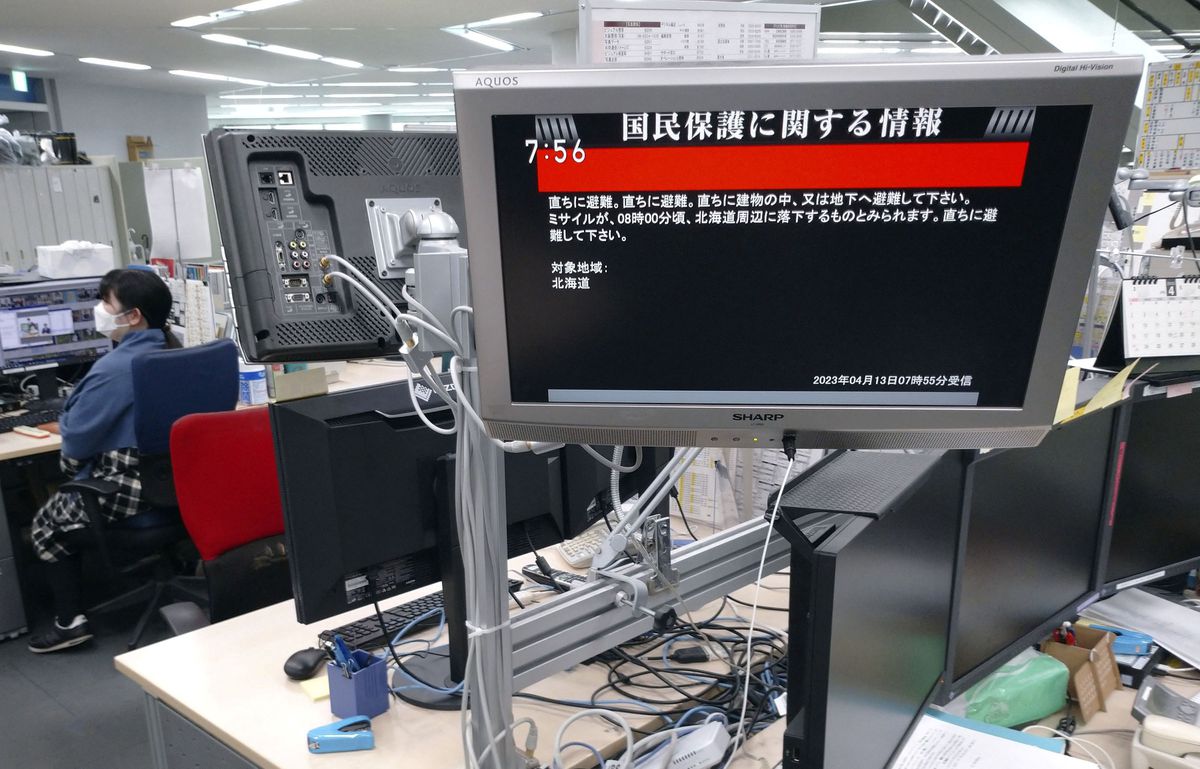Japan stands by cancelled missile alert sent to millions of residents


TOKYO — Japan on Thursday (April 13) stood by a North Korean missile launch warning that led millions of residents to take cover from debris that most likely fell into the sea hundreds of miles away, saying "safety is our top priority".
The alert just before 8am on Thursday triggered sirens on Hokkaido and sent automated messages to mobile phones in a system called J-Alert urging the northern island's more than five million residents to seek immediate shelter after Pyongyang fired a new type of ballistic missile.
Officials switched the alarm off at 8.16am after getting updated information about the missile's trajectory, Chief Cabinet Secretary Hirokazu Matsuno said at a media briefing. Japan's coast guard said the missile had landed by 8.19am.
"The projectile disappeared immediately after detection, but the limited information we had, indicated it could fall in the vicinity of Hokkaido, and peoples' safety is our top priority," Matsuno said.

Public broadcaster NHK, the coast guard and Fire and Disaster Management Agency (FDMA) described the cancelled alert as a "correction", a characterisation Matsuno disputed.
J-Alert has drawn scrutiny after authorities triggered a warning in November across a swathe of central and northern Japan that a North Korean missile was on course to fly over the Japanese islands. The projectile dropped into the sea long before reaching the archipelago.
[[nid:624111]]
An FDMA official said his agency's only role was to ensure the J-Alert system, which is also used for earthquakes and other natural disasters, functions properly. The Cabinet Secretariat, led by Matsuno, decides whether to issue an alert, he said.
Wataru Ishida, an official at the secretariat, said that their decision depends on radar data and analysis supplied by the Ministry of Defence (MOD).
"The MOD looked at the missile's flight path to analyse where it was heading and supplied us with that information; we are not privy to the details of that," Ishida said. "We updated the alert after the MOD told us the missile was not heading for Hokkaido."
A MOD spokesperson said his ministry was still analysing the projectile's flight, including whether it had altered its course. He said that in the first moments after a launch, there was uncertainty about where, precisely, a missile will land.
The FDMA official and MOD spokesperson declined to be identified because of the sensitivity of the matter.
The potential for unnecessary panic caused by false alarms was demonstrated in the United States in 2018 when a mistaken ballistic missile attack alert that sounded for more than 30 minutes stoked panic in Hawaii as residents and tourists scrambled for cover.
ALSO READ: North Korea fires missile, Japan retracts take-cover warning